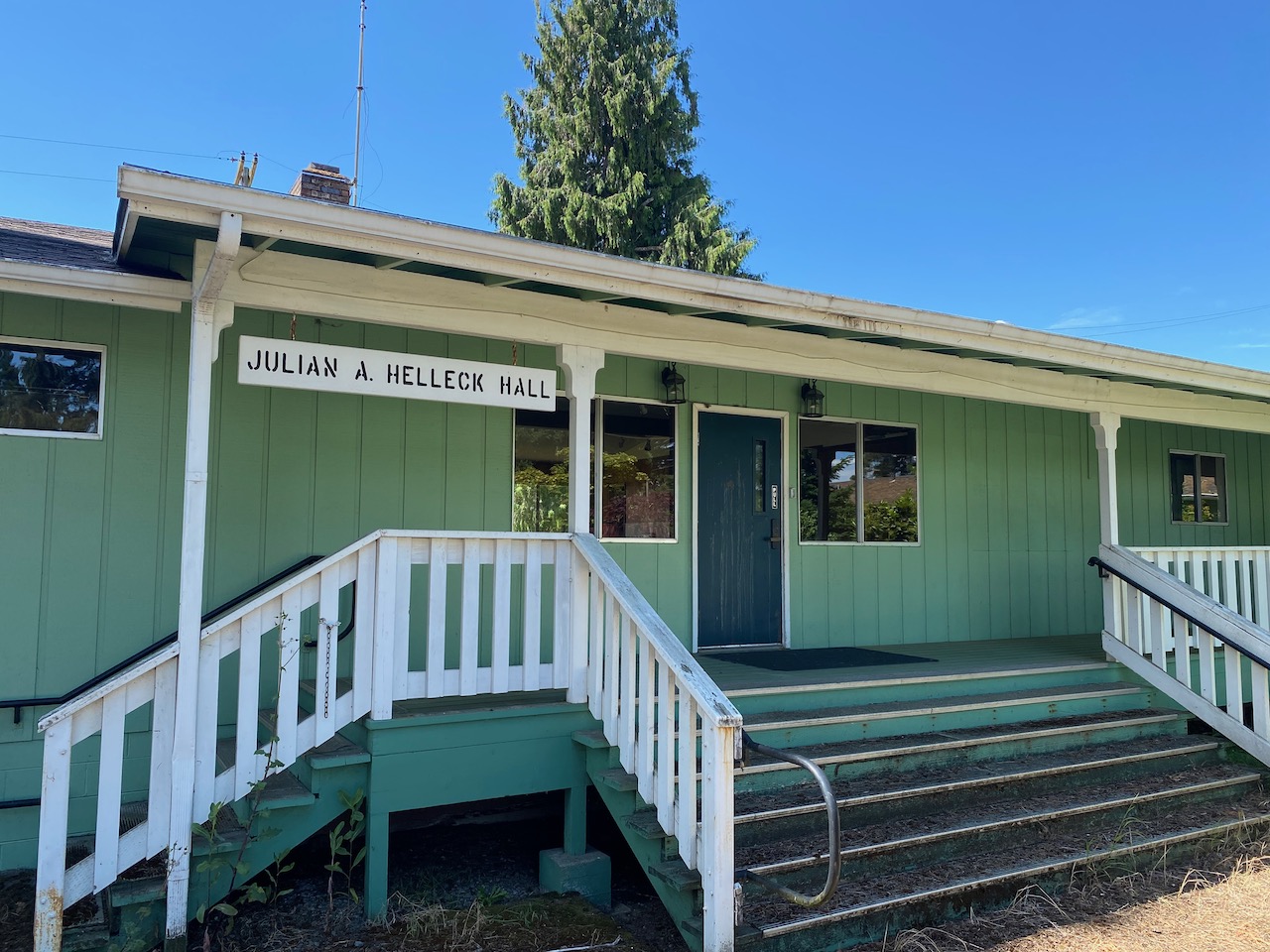By Julie Stanbery
In the beginning…the Pitchford Boys Ranch was established on 20 acres as a second chance alternative home for boys to parole or being sent to The MacLaren School. The ranch was named after Roseburg native Agnes Pitchford who was the first woman elected to office in Douglas County and who became the first Juvenile Department Director.

It mainly consisted of a bunkhouse which is still standing but in disrepair and the big green building at the north end of our HLC called Helleck Hall. This was the classroom, kitchen, dining and gathering place for the boys. The hall was named after Julian Helleck, the department director who developed the ranch concept for delinquent boys. For many years the ranch ran cattle and hayed the fields.
Through the years, Master Gardener volunteers worked with the boys teaching them basics of horticulture and some useful work skills. After 38 years, the ranch closed in 2001 due to lack of funding.
Our focus shifted as the concept of a Discovery Garden project was discussed in length after a mini-college Search for Excellence session that inspired MG Sandra Beck (MG 1986) to take the lead on the project. From a humble beginning of a discussion and visits to gardens in Oregon and Washington, a plan emerged. Who among us could have imagined 24 years later that we were destined to grow into the remarkable educational site the Discovery Garden is today?
This is a saga of no small proportion. The highs, the lows, the frustration, determination and hope are all vivid details that make this story one we are proud to share with the world of gardening.
In 1998 after an abortive site planning at Mercy Hospital, we found it necessary to reconvene the site selection committee. It was soon decided the logical choice would be our own HLC where the Extension Service already had a signed agreement with the County for use of the land.
And so in 1999, preparation of our new garden began. The old cow pasture was leveled, trees cut, slash removed and rock placement where our new green storage shed and pavilion would be built.
As the storage shed was taking shape, Master Gardener crews were completing the water and electrical installations to be followed by fencing constructed to exclude deer; a considerable problem in the area. Several unique metal sculptures were built, donated and installed by Bill Town (MG 1991) as well as the attractive entry gate. The construction of a Japanese Garden was begun as a tribute to the people of Shobu (now known as Kuki), Japan, Roseburg’s sister city.
Much of the original planning of outbuildings and hardscape were under the guidance of John Punches and Steve Renquist from Douglas County Extension.
A composting demonstration was set up next. To compliment this exhibit, the chapter joined Douglas County Waste Reduction/Recycling Manager, Terri Peterson, who was also a master composter, to request a $20,000 grant from DEQ to build an outdoor classroom and compost center which was the first of its kind in Douglas County.
Also underway at this time was the planting of a hedgerow of trees and shrubs to help screen the garden from adjacent County park facilities. MG Emeritus Barbara MacPherson was primary on this committee.
A rose garden was planted around the entrance gate, a children’s garden was started, complete with a tunnel of clematis vines, and the installation of a very innovative garden of herbs was begun.

Our entrance sign, designed and built by our own Jeff Havener (MG 1998) was installed in March of 2000 just in time for our dedication with many community leaders and news media in attendance. By July a building permit was obtained for our teaching pavilion designed by a local architect. The Umpqua Valley Homebuilders completed the structure by the end of the year, but without the roof as we were out of funds. Then Wolf Creek Job Corps stepped forward and took on the roof construction as a training project for their carpentry program.
The roof was fabricated at the Job Corps site on Little River, dismantled, hauled to the Discovery Garden and installed. In all, about 30 Job Corps personnel participated.
Meanwhile, a small orchard was planted and the Japanese Garden project was well underway, a highlight being the introduction of ferro-cement by Brad Ball who built many of the structures at Wildlife Safari. Under his direction we constructed the mountain and pond features.
Another garden that bloomed was the ornamental tree and shrub section which our then new agent, Steve Renquist, would use to teach new gardeners the art of thinning and pruning.
Early on, circa 2003, we were already using the facility as it was intended for public education. One class taught by Leo Grass (MG 2002) was the construction of the small paver patio in the Japanese Garden. As I remember, a rainy Saturday and about 15 non-MG’s attended the “hands-on” class to learn to build a patio, which of course was a much appreciated improvement. We had ferro-cement training sessions where we built the mountains, two composting seminars and several elementary school class visits. The then two existing greenhouses (WSG #1) were incorporated into our annual training in plant propagation.
Much of this history was compiled by my good friend and fellow Jack Wright MG (1989) who gave this talk at OMGA Search for Excellence in 2003. He concluded with this uplifting comment: “As we see it, the gardening future is very bright in Douglas County. in fact, the sky’s the limit.”
